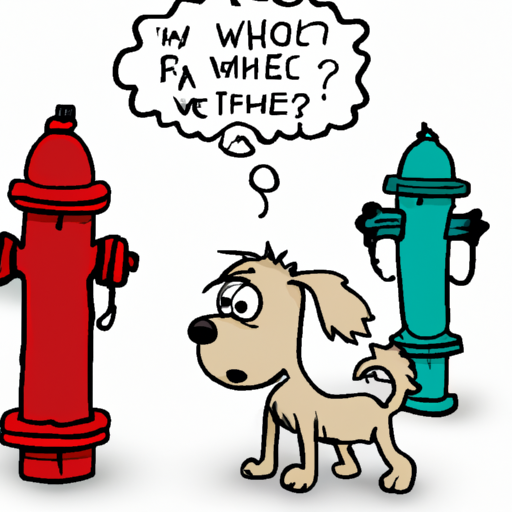As a caregiver, understanding your dog’s behavior is crucial to provide the necessary care and guidance. One behavior that often raises eyebrows is marking. This piece aims to shed light on this behavior, focusing on the question, “When do dogs start marking?”
Understanding Dog Marking
Dog marking, also known as urine marking, is a way for dogs to communicate with each other. It’s like they’re leaving a personal calling card for other dogs to read. They might mark their territory, signal their mating availability, or assert dominance.
But, when does this start? Typically, dogs start marking when they hit puberty. This is usually around six months old, but can vary depending on the breed and individual dog.
Factors Influencing Dog Marking
Several factors can influence when your dog may start marking.
- Breed: Some breeds may start marking at an earlier age than others. For instance, small breeds often mature faster than larger breeds.
- Sex: Male dogs are more likely to mark than female dogs. However, female dogs may also mark, especially if they are in heat.
- Neutering/Spaying: Neutered males and spayed females are less likely to mark compared to their intact counterparts.
The Role of Hormones in Dog Marking
Hormones play a significant role in marking behavior. When dogs reach sexual maturity, their bodies start producing hormones that trigger marking behavior. Testosterone in males and estrogen in females are the main hormones involved.
However, it’s not just about sexual maturity. Stress hormones can also trigger marking behavior. If your dog is feeling anxious or stressed, they might start marking, irrespective of their age or sexual maturity.
| Hormone | Role |
|---|---|
| Testosterone | Triggers marking in males |
| Estrogen | Can trigger marking in females |
| Cortisol (Stress hormone) | Can trigger marking in stressed or anxious dogs |
How to Manage Dog Marking
You might find dog marking behavior challenging to manage, but there are several strategies you can employ:
- Neuter/Spay: This can lessen or eliminate marking in many dogs.
- Training: Reward your dog for urinating outside and discourage indoor marking.
- Clean thoroughly: Dogs are more likely to mark a spot that smells like urine.
Frequently Asked Questions
Q: Is marking a sign of a medical problem?
A: Not usually. However, if your dog’s marking behavior changes suddenly or drastically, it could be a sign of a medical issue. Consult with a vet if in doubt.
Q: Does neutering/spaying guarantee my dog will stop marking?
A: Not necessarily. While neutering/spaying can reduce marking behavior, it’s not a guarantee.
Q: Can older dogs start marking?
A: Yes. Changes in environment, stress levels, or medical conditions can cause older dogs to start marking.
Understanding your dog’s marking behavior can be a fascinating journey into the canine mind. Remain patient and empathetic – remember, your furry friend isn’t trying to annoy you. They’re simply communicating in the only way they know how.



